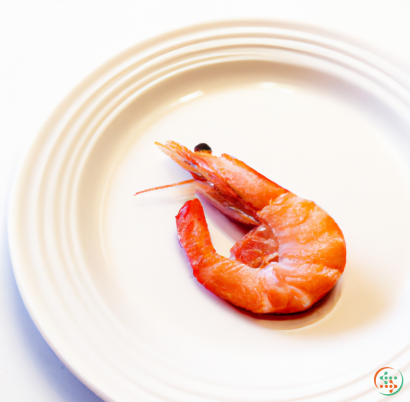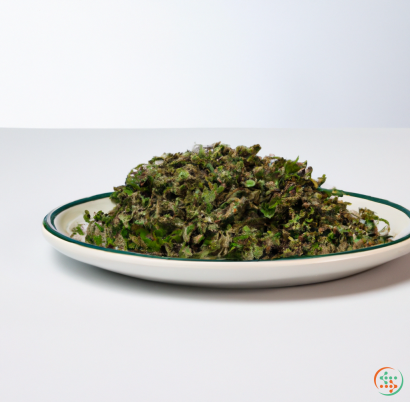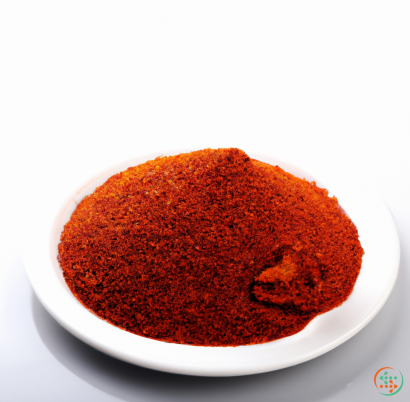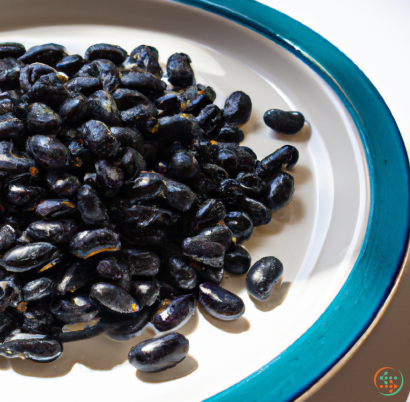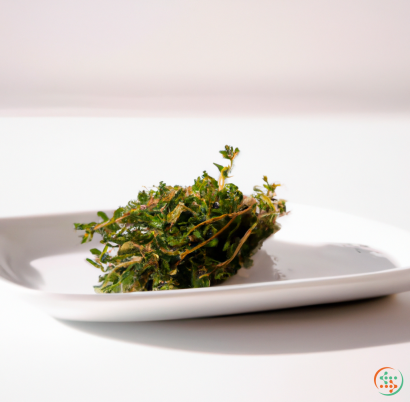Lobster
A lobster is a type of seafood that is not only delicious, but also has a very interesting history and biology. The lobster has been around for hundreds of millions of years and has terms such as "lobster roll" and "surf and turf" being used to describe dishes it is part of. But what exactly is a lobster?
A lobster belongs to the crustacean family, which includes shrimps, crabs, crayfish, and other shelled creatures found in saltwater and freshwater habitats. They are typically characterized by their hard shells covered in spiky hairs and long antennae, their 10 legs, and their large claws. There are around 5,000 species of lobster, though the most commonly seen are the American lobster and the European lobster.
The American lobster, or Homarus americanus, is the most commonly found species in North America. It can be found from the shallow waters of the Atlantic Coast from Canada to North Carolina. American lobsters are usually reddish-brown in color and have no claws, though they do have large “pinchers” located near their heads. On average they can grow to be up to 28 inches long and weigh up to 25 pounds.
The European lobster, or Homarus gammarus, is found in the North Atlantic, especially in the UK, Norway, and Ireland. European lobsters are typically bluish-green in color, and they have two large claws, one that is significantly smaller than the other. They can live up to 50 years and on average are about 18 inches long and weigh around 5 pounds.
In terms of biology, lobsters have an impressive array of adaptations that help them survive in their habitats. One of the most impressive features is the lobster's ability to regenerate lost limbs and claws. For example, if a lobster loses a leg, it can easily regrow one to replace it. Additionally, lobsters have the ability to understand the concept of geography, as they can remember where they have lived and traveled, and also where food sources are located.
Lobsters feed primarily on small fishes, crustaceans, and mollusks, as well as decaying organic matter. They use their very keen sense of smell and taste to locate food, as well as their powerful claws and antennae. Lobsters are also known to be curious creatures, and they often investigate potential food sources before eating them.
The lobster is a unique creature that has been part of human cuisine and culture for many centuries. It is most commonly consumed steamed, boiled, or grilled, and is found in many dishes such as lobster rolls, surf and turf, and bisque. Lobsters also have a long history of being used as bait in fishing and are often found in traps set out to catch crabs and other types of seafood.
Lobsters are truly amazing creatures, with unique adaptations and long lifespans that allow them to survive and thrive in a variety of habitats. With their incredible regenerative capabilities and keen senses, these animals are truly a wonder of the sea. So the next time you are considering ordering a lobster dish on the menu, you know you are doing more than just eating a delicious meal, you are also truly appreciating a very fascinating animal.
When diners think of a lobster dinner, their minds may light up with visions of delicious buttery meals, but few of us ever take the time to consider what goes into creating a lobster ready for consumption. From its beginning as a tiny larva in the ocean depths, to the complex and painstaking process of getting it to a dinner plate, the journey of a lobster is an intricate series of complexities which makes for an interesting study.
The Lobster Life Cycle
Lobsters are part of a unique family of crustaceans known as Decapoda, which include crayfish, shrimp, and crabs. They are invertebrate animals that have external skeletons and jointed legs, two of which are larger than the rest and used for gripping and grasping. Unlike other arthropods, most lobsters have an exoskeleton made of a strong and durable material known as chitin, which allows them to survive in a variety of tough environments.
The life cycle of a lobster begins with an egg, formed during mating between an adult female and a male lobster. Once the egg is fertilized, it attaches to the female’s swimmerets, where it may remain attached for up to six months before hatching. The egg eventually breaks open and the newborn lobster, known as a “nauplius,” will live and feed on zooplankton until it molts and morphs into a “zoea” lobster. This stage may last for several weeks, as the lobster gradually becomes more mature.
During the next stage, the “megalops,” the lobster will develop a pair of large claw-like appendages, which are used for defense and for catching prey. As an adult, the lobster will reach a length of up to three feet and may weigh up to twenty pounds. Lobsters are capable of living for decades, with the oldest known individual reaching an estimated age of one hundred and fifty years.
Fishing and Harvesting
Lobsters are usually caught by humans with lobster traps, or with nets and dredges. Traps are baited with dead fish and crustaceans, which will attract lobsters so they can be pulled up out of the water. The traps are designed to close once the lobsters enter, and they will stay confined until the traps are opened or the lobsters are pulled out.
Most lobsters are wild-caught, though some farms do exist and are becoming increasingly popular, especially in regions such as Scotland and New England. Farmed lobsters can also be processed for use in canned products, as is done in Canada.
Processing & Transportation
Once a lobster is harvested, it can be processed in a number of different ways. The simplest method is to pack the lobster in boxes filled with either seawater or ice and then transport it to its destination. To avoid spoilage, lobsters must be kept alive during all stages of the transportation process or they will soon begin to rot. In order to extend the shelf life of lobsters, they are commonly held in holding tanks filled with saltwater and then transported in aerated containers to prevent suffocation.
Many countries also have regulations for how lobsters should be handled and transported, in order to ensure that they are sustainably harvested and ethically treated. In the US and Canada, all lobsters must be injected with a tracking device before being shipped, in order to track their movements and guarantee that they were not illegally obtained.
Preparing for the Plate
The last stage of the journey of a lobster is the most important: getting it prepared for a dinner plate. This can be done in a number of ways, including boiling, steaming, and grilling. Many chefs prefer to boil their lobsters, as this is the quickest and simplest method of cooking them.
However, this method has recently come under fire due to concerns about animal cruelty. Some believe that it’s unethical to cook a living creature and argue that the lobster may experience pain while it's being boiled alive. As a result, some chefs now opt to use the “mercy killing” method, in which they kill the lobster prior to cooking it. Other methods of preparing a lobster for consumption include steaming or grilling.
The Final Result
Regardless of how it is cooked, once a lobster is prepared, it is ready to be served on a dinner plate and enjoyed by its lucky diner. The journey from a lobster larva in the ocean depths to a dinner plate is both impressive and complex, but thanks to a combination of human ingenuity and regulatory measures, it is now possible to enjoy a delicious lobster dinner with minimal environmental impact.
| Vitamin A | 0.001 mg | |
| Vitamin E | 0.001 grams | |
| Vitamin B1 | 0.02 mg | |
| Vitamin B2 | 0.02 mg | |
| Vitamin B3 | 0.00183 grams | |
| Vitamin B4 | 0.0809 grams | |
| Vitamin B5 | 0.00167 grams | |
| Vitamin B6 | 0.12 mg | |
| Vitamin B9 | 0.011 mg | |
| Vitamin B12 | 0.00143 mg |
| Calcium | 0.096 grams |
Daily Value 1.3 g
|
| Iron | 0.29 mg |
Daily Value 0.018 g
|
| Magnesium | 0.043 grams |
Daily Value 0.4 g
|
| Phosphorus | 0.185 grams |
Daily Value 1.25 g
|
| Potassium | 0.23 grams |
Daily Value 4.7 g
|
| Sodium | 0.486 grams |
Daily Value 2.3 g
|
| Zinc | 0.00405 grams |
Daily Value 0.011 g
|
| Copper | 0.00155 grams |
Daily Value 0.9 mg
|
| Manganese | 0.07 mg |
Daily Value 0.0023 g
|
| Selenium | 0.0731 mg |
Daily Value 0.055 mg
|
| Tryptophan | 0.248 grams | |
| Threonine | 0.753 grams | |
| Isoleucine | 0.832 grams | |
| Leucine | 1.376 grams | |
| Lysine | 1.426 grams | |
| Methionine | 0.475 grams | |
| Cystine | 0.208 grams | |
| Phenylalanine | 0.782 grams | |
| Tyrosine | 0.673 grams | |
| Valine | 0.852 grams | |
| Arginine | 1.753 grams | |
| Histidine | 0.475 grams | |
| Alanine | 1.01 grams | |
| Aspartic Acid | 1.842 grams | |
| Glutamic Acid | 2.802 grams | |
| Glycine | 1.267 grams | |
| Proline | 0.852 grams | |
| Serine | 0.733 grams |
| Total Sugars | 0 ug |
per 100g
|
| Myristic acid (14:0) | 0.01 grams |
|
| Palmitic acid (16:0) | 0.13 grams |
|
| Stearic acid (18:0) | 0.05 grams |
|
| Arachidic acid (20:0) | 0.01 grams |
|
| Total Saturated fatty acids: | 0.2 g | |
| Oleic acid (18:1) | 0.18 grams |
|
| Palmitoleic acid (16:1) | 0.03 grams |
|
| Gadoleic acid (20:1) | 0.03 grams |
|
| Total Monounsaturated fatty acids: | 0.24 g | |
| Omega-3 Timnodonic acid (20:5) | 0.12 grams |
|
| Omega-3 Clupanodonic acid (22:5) | 0.01 grams |
|
| Omega-6 Eicosadienoic acid (20:2) | 0.01 grams |
|
| Omega-3 Alpha-linolenic acid (18:3) | 0.05 grams |
|
| Linolenic acid (18:3) | 0.05 grams |
|
| Linoleic acid (18:2) | 0.04 grams |
|
| Total Polyunsaturated fatty acids: | 0.28 g | |
| Cholesterol | 0.15 grams |
|
| Total Sterols: | 0.15 g | |
| Trans-monoenoic fatty acids | 0.01 grams |
|
| Total Trans fat: | 0.01 g | |

